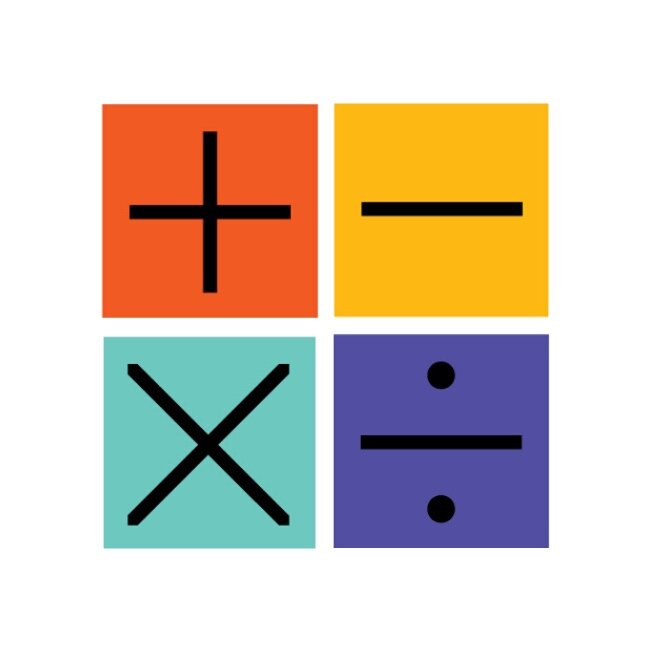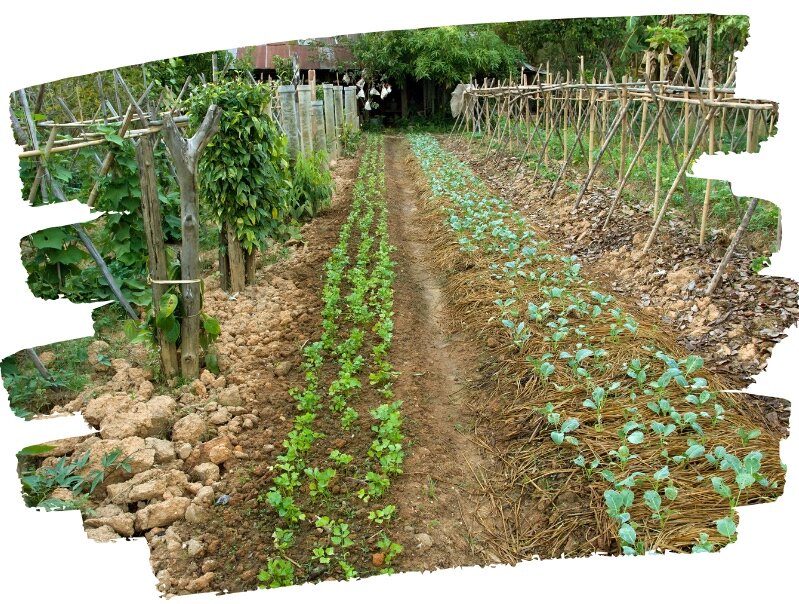Everyday Math Series - Math in the Garden
Summer’s here and it’s time to find a new rhythm in our daily lives. Hopefully, you can find some time to escape your daily obligations and get outside and enjoy the nice weather. My goals this summer (okay if I am honest here I am leaving off all the house projects) are the same as last the few years:
Bike at least 1,000 miles
Spend more time in the woods than at my computer (this one is a hard one to obtain)
Shift our schooling focus without stopping the learning
That last one is the one I want to focus on here. Do you worry about summer learning loss? I do - both as an educator and as a parent. I feel like it is on all of our minds more this year than ever before given distance learning and the chaotic end to the school year. My friends and I talk about this a lot. Are we doing enough with our kiddos? Too much? How do you know what materials to focus on?
So much of what you choose to work with has to work for your family and your student. It’s going to look different for everyone. Some families need the structure of a pre-made curriculum and worksheets. Some kids can’t stand to work that way and need to move their bodies more, need the schooling to be less structured and freer. We do a bit of both but this summer we have shifted more to the active, learning by doing model.
I have shared in the past that I homeschool my kids and I had planned to homeschool and continue as normal through the summer. We took an extended break in November and December for travel and visiting family. (P.S. Joshua Tree is amazing. When this pandemic is finished you should go. Add a few extra days, you won’t regret it. Also, bring your camera charger so you can actually take pictures . . . not that I forgot it.) Our goal when we started this journey was to distribute our breaks to limit learning loss from the long summer break. Well fast forward to COVID-19, police brutality, protests, and riots in our hometown and schooling has been interrupted a lot by social learning and anxiety management these last few months.
When I started to plan and think about what school looked like this summer I knew we needed to shift away from our traditional material and be more magical for my oldest. I also needed it to be incorporated into my daily chores because a mama only has so much time. Am I right?
With all of this in mind, I want to share with you some of the ways you can incorporate math into your daily life. The goal here is to continue the schooling without it feeling like another school day. The focus of these examples is going to be Math in the garden. Ideally, you can get outside for this but you could translate a lot of this to container gardening as well. You can totally expand this list and make it cross circular. Think insect and bird ID guides and soil testing for science, different stories focused on gardening and growth for Language Arts, George Washington Carver, and his research related to sustainable gardening, etc. Honestly, that is a whole other blog post. Drop a comment below if you are interested in that and I will put it together.
I previewed some of this information on my Facebook page a few weeks ago. But today I want to dive deeper. When planning, planting, and working in the garden we often do the math in our heads without really actively thinking about it. These suggestions are simply taking that math out of our heads and sharing it with our kids/students.
Number Sense, Counting, Cardinal Numbers
Spacing is important when planting a garden - have things too far apart and you wasted space, too close and plants don’t have enough room to grow. I have always estimated spacing in my head but the past few years I have been laying out a tape measure to get help from my oldest with planting. He counts out the spacing - 1, 2, 4, 6, 8, 10, 12 inches apart - and then makes the hole and plants the seed. I have used this to practice at first just counting to high numbers but now I use it for practice counting by groups (2, 4, 5, 10, etc.).
We also practice with cardinal numbers. “What’s planted in the second row?” This gives a real-world application instead of a practice worksheet.
Number sense is the ability to understand amounts and compare them. Gardening is a great place to do this. You can compare different plant types to see which you planted more of. You could also compare yields an estimate which plants are most and least productive. How about comparing plant size and how much of the garden each takes?
Measurements and Units
Measurements are fun for young kids. If you have elementary students at home have them help with the garden plot measurements. They can have a pad of paper and record the measurements of the plot (practice writing numbers). Practice including units with each number.
Speaking of units - practice converting those units. Inches to feet to yards, meters to centimeters or kilometers, feet to meter. . . . you get the idea. Don’t remember the conversion - check out these resources here and here. I rarely see a high school student who doesn’t need a refresher on at least some of these conversions. This is good for all students to review and practice.
Geometry
Are bunnies or deer stealing things from your garden? This is a great time to put a fence around it. Have your student help calculate the perimeter of the garden. Have a round garden? Even better! Calculate the circumference of the circle.
Every year we add compost to our garden. This year because we made new beds we also added soil and peat. Before doing this have your student calculate the volume of each of the additives.
Percentage and Ratios
When gardening you will likely have some materials to purchase - seeds, plants, soil additives, fencing, etc. - have your student calculate the cost of each of these. Have them also calculate the sales tax or sale price by using percentages.
Sometimes you need to add a specific type of fertilizer to your garden. These often come in concentrated form and you have to dilute them for use. If appropriate have your student calculated the dilution amounts. (I know this looks like chemistry but don’t let that scare you - it’s still math)
Don’t garden but fertilizer your yard instead? Here is a nice resource to help with that calculation.
Linear Equations
Remember that geometry problem about calculating the perimeter of the garden for fencing? Take this one step further and have your student write out the linear equation for the price of the fence. For example:
total price = amount of fencing x price of fence/unit x sales taxYou can also use linear equations to calculate the number of plants/seeds per row based on recommended spacing. See the work below to help with set up.
total # of seeds = # of rows x seeds/row
seeds/row = (total length of row)/(spacing of seeds)
One of the most inspiring parts of homeschooling is how it has opened my eyes to the opportunities to learn every day, doing all that we do. The other week I told my son we were taking a week break from homeschooling (it was the end of the year for public schools) and he corrects me. “Mom, I am always learning. I can’t take a week off - I would have to sleep the whole time!” With that he stomped away and drove deep into a patio he is making in his sandbox. Drop a comment below with the ways you have found to incorporate learning into your everyday life.



